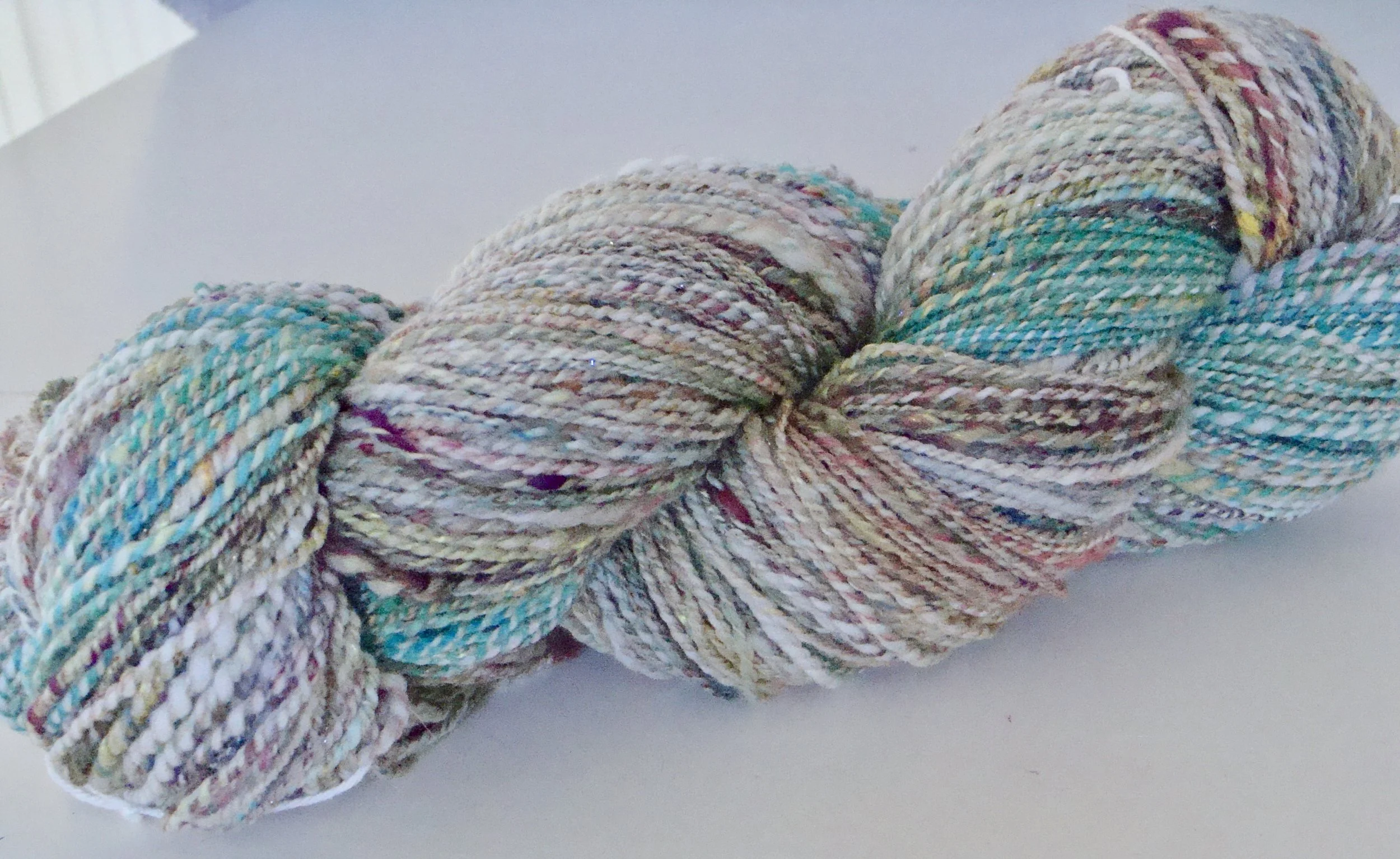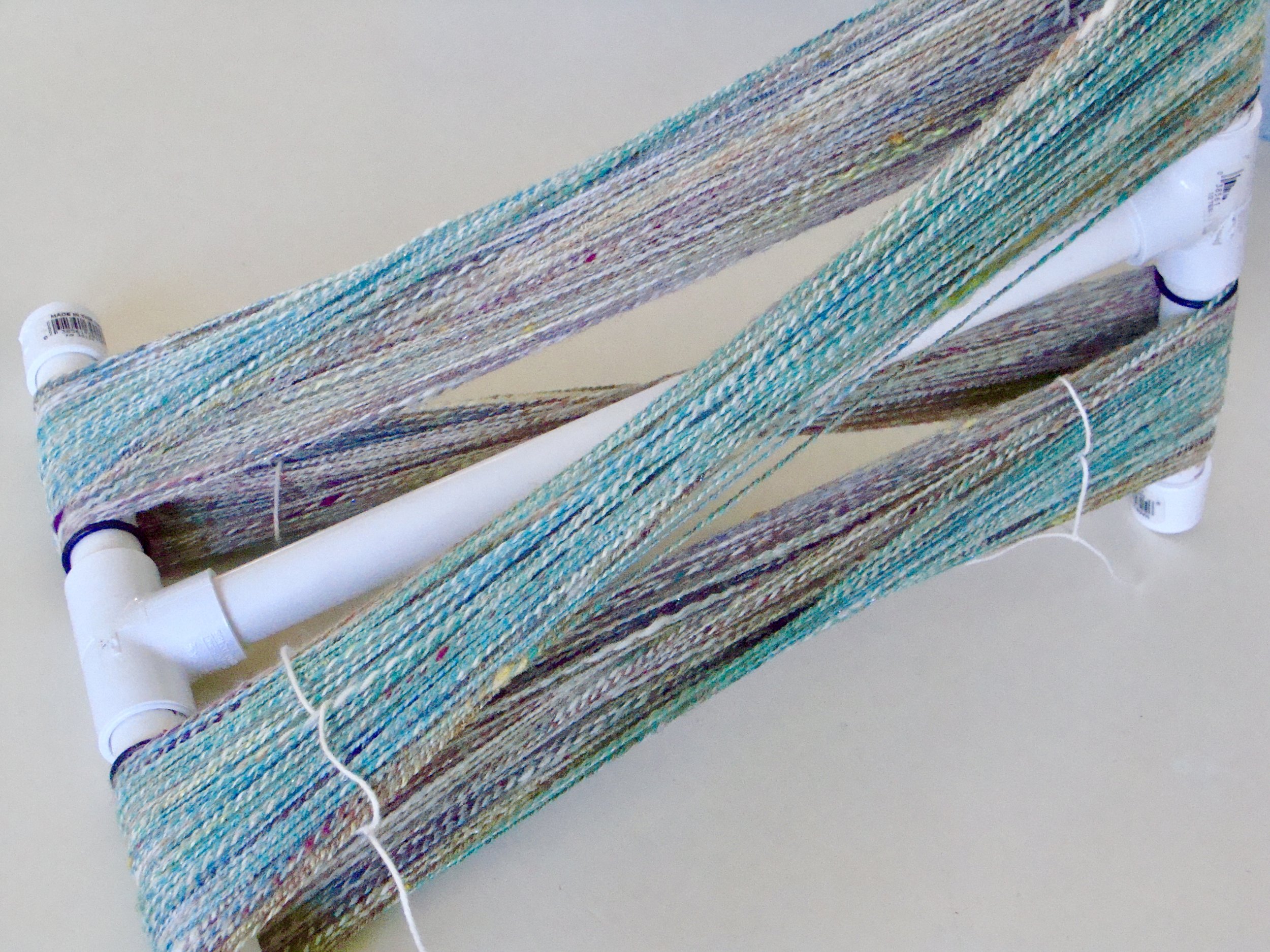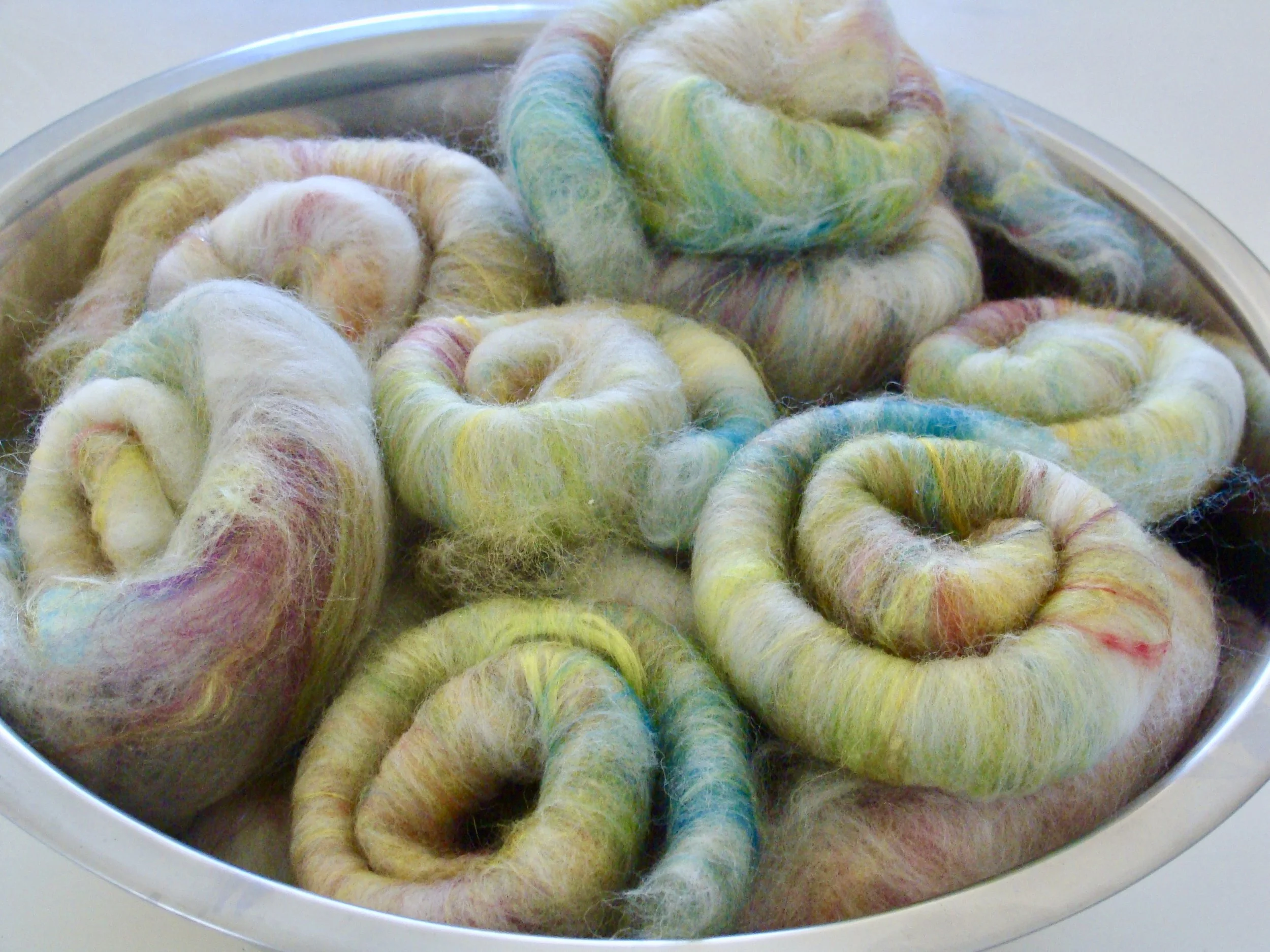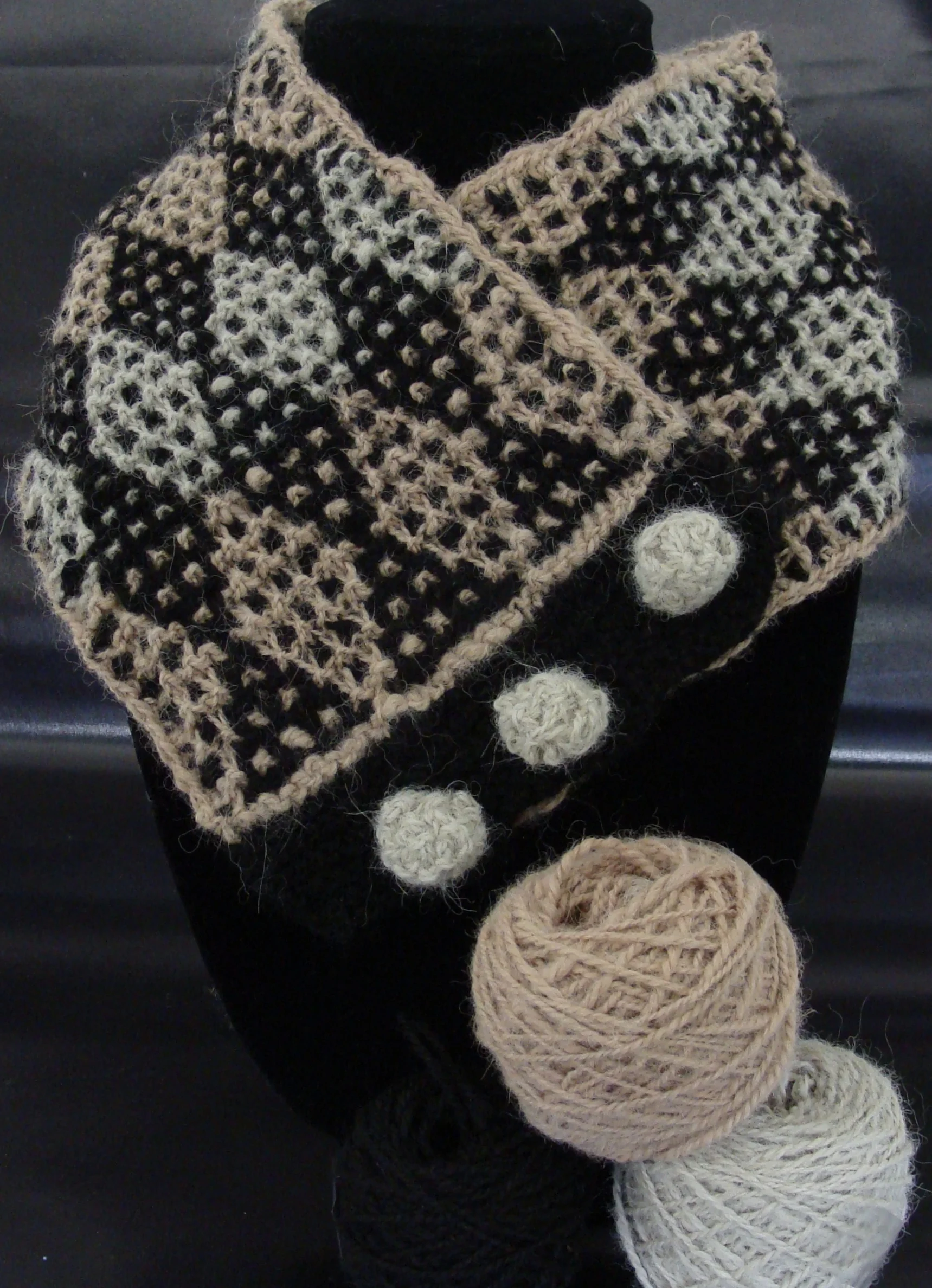Spinning Fairy Salad - Part 2
This is Part 2 of a two post series on Spinning Fairy Salad. If you missed Part 1, you can get caught up by checking out Spinning Fairy Salad.
In the last post, we left our Fairy Salad fauxlags sitting pretty in their mixing bowl. Today, its time to make yarn!
I spin on a Louet S17 spinning wheel. It is a very basic wheel; which has been great for me as a new spinner. Not a lot of bells and whistles, but everything I need for now.
note - photo from my first handspun "yarn" . . . and I use the word yarn loosely here!
I wanted to spin the Fairy Salad into a finer yarn; something I could use for weaving. I don't have a particular project in mind, although I have a couple ideas swimming around in my head. My Louet wheel comes with bobbins with 3 ratios: 5.5:1, 7.5:1, and 10.5:1.
Ratio basically relates to the speed the bobbin turns. It is expressed as a pair of numbers that indicate how many times the bobbin (what the yarn spins onto) turns for every revolution of the large drive wheel. For example, 5.5:1 means the bobbin turns/spins 5.5 times for every one revolution of the large drive wheel. The higher the ratio, the more turns the bobbin makes per revolution, and hence the faster (more) twist that enters into your yarn.
In general, thinner yarns need more twist to hold them together. So, I used my highest ratio, 10.5:1, to spin this yarn.
handspun single yarn
I spun directly from the tip of my predrafted fauxlags using a short draw technique and Z twist. This produced a semi-worsted single ply yarn. That sounded mighty official, didn't it?
For those of you not into the technical aspects of spinning, skip over this next section. Maybe hum (or depending on your voice, sing) a chorus of 'Row, Row, Row Your Boat' and I'll be back with you in a sec.
Here are some basic definitions:
Predrafting-thinning the fiber (fauxlag in this case) down to make it easier to draft (spin)
Short Draw - the fiber is spun, keeping the twist in front of the fiber in your hand. This produces a more compressed and smoother yarn.
Z-twist- yarn spun with the wheel going clockwise (as opposed to S-twist where the wheel goes . . . you guessed it counterclockwise)
Semi-worsted-a combination of a woolen preparation (in this case fauxlag) and spun with a short draw (aka worsted) drafting method
Next I wanted to make my single ply yarn into a 2 ply yarn, in other words doubled in thickness. Why? Well, as you would guess, a 2 ply yarn is stronger and more durable than a single ply yarn. This is especially important to me since I'll be using this yarn for weaving, potentially under tension on the warp.
Warp-lengthwise yarns or threads on a loom that are held under tension
There are many ways to ply yarn. My favorite at the moment is to ply from a ball. To accomplish this, I wind directly from my spinning bobbin (off tension) to a ball winder.
I then S twist ply (remember counterclockwise) from both ends of the ball. I have had a few issues with tangling, but all in all, this method works really well for me. Here is a short video that shows how I do this.
So here is the completed 2 ply Fairy Salad yarn on the bobbin. There is some barber poling and also more solid color areas, very random. I think it turned out very Spring-ish! I like it!
Next step was to wind the yarn off on to a niddy noddy. Pete made my niddy noddy from PVC pipe. You can email me if you'd like the simple plans. I have several lengths of center pieces I can exchange that allow me to wind different skein lengths. This was the 12 inch section; one complete loop around is 60 inches. So I had 192 wraps for a total of 320 yards. (60 inches x 192 wraps = 11520 inches divided by 36 inches/yard = 320 yards). I always tie my 2 yarn ends together, even if that means wasting a little yarn (I know the German in me has a hard time with this). I tried not doing this twice and both times I ended up with a tangled mess. I then tie my skeins with a figure 8 tie in three to four places.
To finish the yarn, I soaked it in tepid water for about 15 minutes; gently squeezed most of the water out; and then hand pressed it between bath towel layers to squeeze out any additional water. I hung the skein on a plastic coat hanger in my shower to dry overnight.
Fairy Salad handspun 2 ply yarn
And done! I hope you've enjoyed this mini spinning series. I have lot of fun things planned, so please continue to check back often, or better yet, subscribe so you'll receive notification of new posts each time they come out.
Thank you!












![More [Really Cute] Baby Goats](https://images.squarespace-cdn.com/content/v1/5882988c37c581fc6ad08d7b/1488227667911-V42D5N2MO4NQ1G4Q7K6S/DSC06990.JPG)


